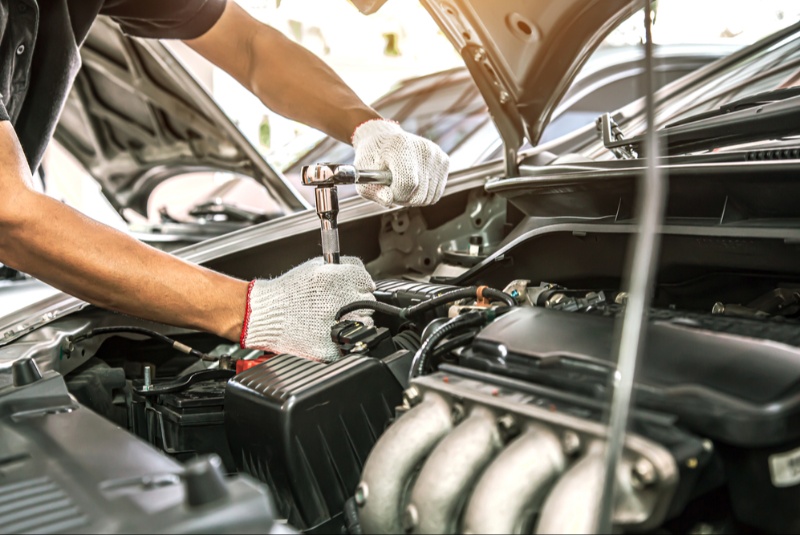Owning a car is often a love-hate relationship. On one hand, a car can bring freedom, convenience, and joy to your life. On the other, it can also bring financial stress in the form of repairs and maintenance. According to a AAA study, the average American spends about $1,186 per year on vehicle repairs and maintenance. Those costs can skyrocket if you're not careful, turning your four-wheeled freedom into a financial burden. Here’s your comprehensive guide on how to save money on car repairs without compromising on quality.
1. Understand Basic Car Mechanics
The first step toward reducing car repair costs is developing some basic knowledge about your vehicle. You don’t need to become a full-fledged mechanic, but understanding essential components like the engine, brakes, and transmission can help you make more informed decisions. By knowing a little about your car’s major parts and functions, you’ll have more confidence in conversations with mechanics, reducing the chances of being talked into unnecessary repairs and expenses. Basic car knowledge can also help you identify small problems before they escalate into expensive issues.
2. Choose a Reliable Mechanic
Selecting a trustworthy mechanic is critical to managing repair costs and ensuring the job is done correctly. Start by asking for recommendations from friends, family, or coworkers who have had positive experiences. Once you’ve shortlisted a few, look up online reviews to verify their reputation. Compare their rates for common repairs to ensure they are competitive, but keep in mind that the lowest price doesn’t always mean the best value. Consider visiting them for a minor job first, such as an oil change, to assess their reliability, workmanship, and customer service. A mechanic you trust can be an asset in the long run, potentially saving you hundreds by providing honest service.
3. Take Advantage of Preventative Maintenance
Preventative maintenance is one of the best ways to keep repair costs down over the life of your car. Simple tasks like regularly checking your tire pressure, engine oil levels, brake fluid, and other vital functions can go a long way in preventing larger issues. Following your vehicle’s maintenance schedule, which is often found in the owner’s manual, will help catch small problems before they turn into costly repairs. Regularly changing oil, rotating tires, and replacing filters as needed are all part of preventative maintenance. Spending a little on regular maintenance can save you a lot in the long run by helping you avoid major repairs.
4. Use Quality Parts, But Be Smart About It
When it comes to replacing car parts, it’s tempting to go for the cheapest option, but this approach can lead to higher costs down the road. Cheap, low-quality parts often wear out faster, potentially causing further damage to other vehicle systems. Instead, consider using certified used parts or quality aftermarket parts, which are generally more affordable than original equipment manufacturer (OEM) parts but still offer similar durability and performance. Local auto parts stores and online platforms often offer great deals on aftermarket parts. Buying quality parts at a reasonable price is a smart approach that can save you from the hassle of frequent replacements.

5. Get a Second Opinion for Major Repairs
When faced with a high-cost repair, don’t hesitate to get a second opinion. Prices and recommended services can vary greatly between mechanics for the same job, and sometimes, the suggested repair may not be necessary. A second opinion can provide valuable insight into whether the initial quote was fair and whether the repairs are truly required. If a mechanic seems to be pushing unnecessary services, another set of eyes can confirm or contradict their assessment, helping you avoid overspending. Additionally, the price difference between shops can sometimes be significant, making it worth the extra effort to check with a few places.
6. DIY for Basic Maintenance
Some basic car repairs and maintenance tasks can be easily done at home with the right tools and guidance, saving you significant money over time. For instance, changing the air filter, oil, windshield wipers, or spark plugs are usually straightforward tasks that can be done by most car owners. There are countless tutorials and how-to videos online for nearly every car model, making it easy to learn the basics of DIY car maintenance. Performing these small tasks yourself can reduce your reliance on mechanics for minor repairs, leaving you more budget for necessary professional services.
7. Negotiate Repair Costs
Many car owners don’t realize that repair costs can often be negotiated. If you’ve done your homework and know a ballpark figure for the repair, don’t hesitate to discuss the price openly with your mechanic. Ask if they can offer any discounts or package deals, particularly if you’re having multiple services done at once. Many mechanics are willing to lower their prices to keep a loyal customer, so it’s always worth asking. For large or unexpected repairs, negotiate payment terms if possible, such as spreading payments over time, which can make high costs more manageable.
8. Know When It’s Time to Let Go
No car lasts forever, and sometimes, ongoing repairs can become a financial drain. If repair costs are approaching or exceeding the current value of the vehicle, it may be time to consider selling or trading it in. Use resources like Kelley Blue Book to determine your car’s current market value and weigh it against the costs of continued repairs. In some cases, replacing an older, high-maintenance vehicle with a newer, more reliable one can actually save money in the long run by reducing repair frequency and improving fuel efficiency.
9. Leverage Warranties and Insurance Benefits
If your car is still under warranty, take full advantage of it for eligible repairs. Manufacturers’ warranties or extended warranties cover many types of repairs, often at no additional cost. Furthermore, check if your credit card offers extended warranty protection on purchases like car parts, which could cover the cost of certain repairs. Auto insurance policies also sometimes cover specific repairs, depending on the coverage you have. Review your policy carefully, and consult your insurance provider to see if you qualify for any claims that can offset repair expenses.
10. Monitor Fuel Efficiency and Address Issues Early
One often overlooked indicator of a car’s health is its fuel efficiency. A sudden drop in fuel economy could indicate a problem with your engine, tires, or other essential systems. Addressing these issues early can prevent them from turning into costly repairs. For instance, a decrease in fuel efficiency could be a sign of a clogged air filter, under-inflated tires, or even a fuel system issue. Keeping an eye on your fuel consumption can alert you to potential problems, allowing you to address them early before they escalate.
11. Sign Up for Loyalty Programs
Some auto repair shops and parts retailers offer loyalty programs that reward frequent customers with discounts, coupons, or other perks. These programs can add up to significant savings over time, particularly if you’re diligent about regular maintenance. Some shops even offer free services like tire rotations or oil changes after a certain number of visits. Signing up for these programs is usually free and can lead to considerable savings, making them worth looking into if you regularly go to the same shop for repairs and maintenance.
12. Use Apps to Find the Best Deals
Several apps can help you find deals on car repairs, parts, and services. Platforms like RepairPal or YourMechanic allow you to compare repair costs at different shops, find trustworthy mechanics, and even get estimates for specific repairs. These apps can help ensure you’re getting a fair price and avoid paying more than necessary. Additionally, some apps track maintenance schedules and provide reminders for regular service, helping you stay on top of preventative maintenance to avoid costly repairs down the road.
Owning a car doesn’t have to drain your wallet. By implementing these strategies, you can save money while ensuring your vehicle remains in good working condition. From understanding basic mechanics to leveraging warranties, knowing when to DIY, and choosing the right mechanic, these tips can help you keep repair costs manageable. Taking a proactive, informed approach to car maintenance can save you hundreds, if not thousands, over the life of your vehicle.




